As a person who can spend hours shooting a single interesting car – having an entire museum full of dozens (possibly over a hundred, I didn’t count) of them made me both more excited than the proverbial kid in a candy store, but also highly anxious about potentially missing something or not really doing a particular line or detail justice. There was just so much to take in – nobody does car design quite like the Italians, and outside of Ferrari there’s probably no better representation of the diversity of vintage to modern style than Alfa Romeo. Clearly, something has been lost in the modern production process – it is understandably impossible to beat aluminium panels by hand over formwork at an industrial scale – but whatever automated process has replaced this, the lines of modern cars just can’t seem to replicate the understand elegance that continued up to about the late 60s. The 8C came very close, but clearly had compromises engineered in for safety, limitations of metal pressing etc. Don’t get me wrong, there are huge advantages to the modern production methods – such as symmetry (most of these cars were clearly NOT symmetric left to right, visible when standing at the front or rear centrelines) and interchangeability of parts – but there really was something special about the metal on show here. I initially went as a petrolhead and spent most of my time looking at the lines and proportions as a designer; to figure out exactly what it was in the ratios, angles and curves that make an object visually appealing – and moreover, if I could somehow apply that to watch design. For sure, it’s a much smaller object with much less external detailing and complex curves are significantly more difficult to model in CAD than regular shapes, but I’m pretty sure there’s something fermenting at a subconscious level. Time will tell…MT
This series was shot with a Nikon Z7, 24-70/4 S and my custom SOOC JPEG profiles.
__________________
Prints from this series are available on request.
__________________
Visit the Teaching Store to up your photographic game – including workshop videos, and the individual Email School of Photography. You can also support the site by purchasing from B&H and Amazon – thanks!
We are also on Facebook and there is a curated reader Flickr pool.
Images and content copyright Ming Thein | mingthein.com 2012 onwards unless otherwise stated. All rights reserved


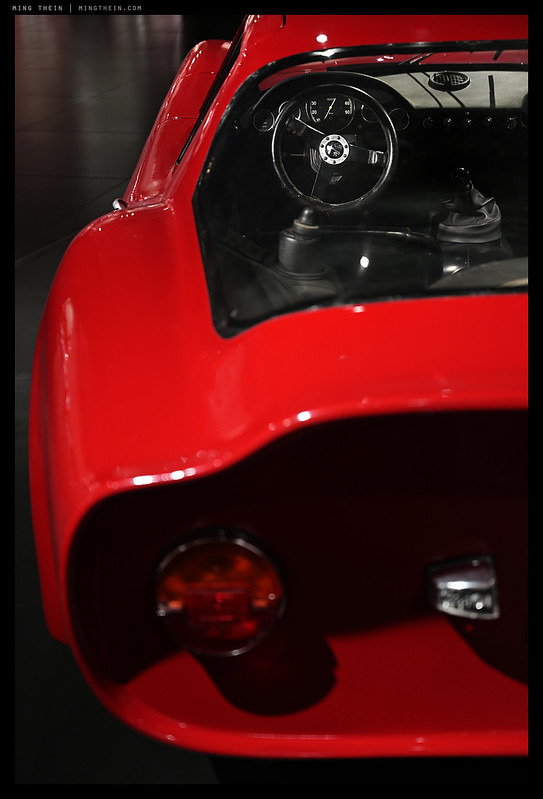



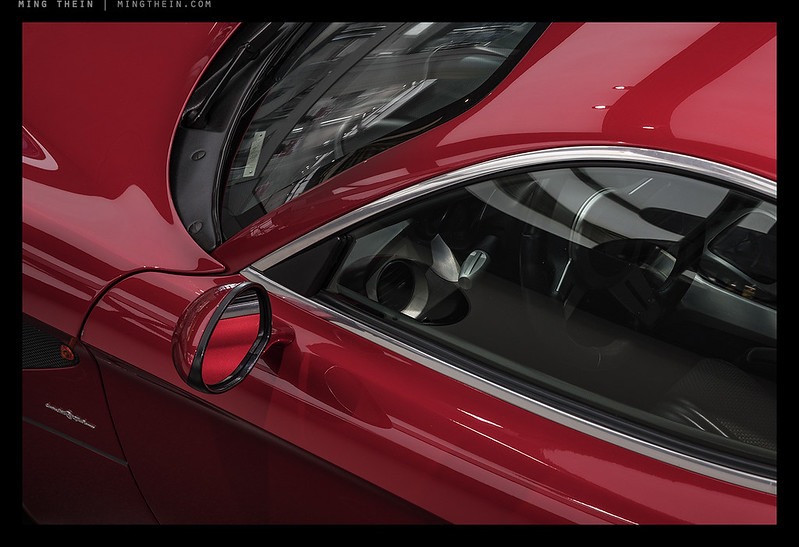


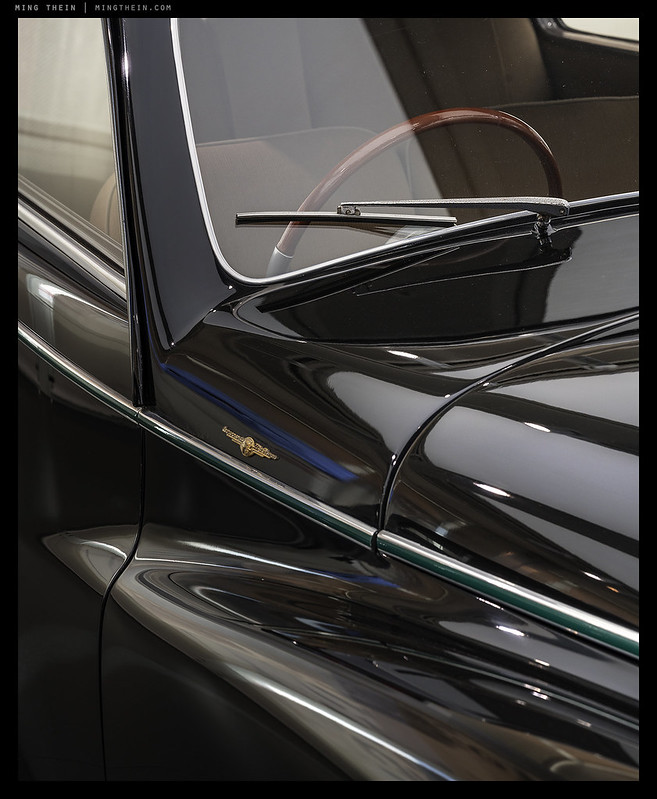


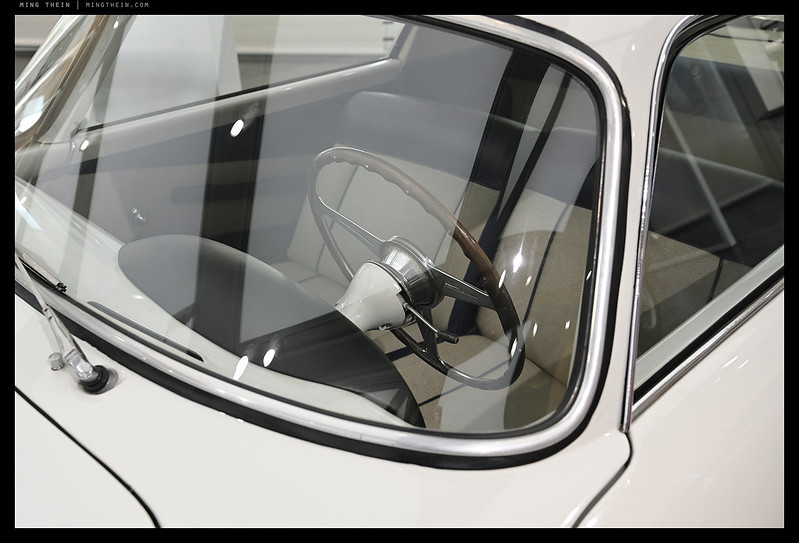

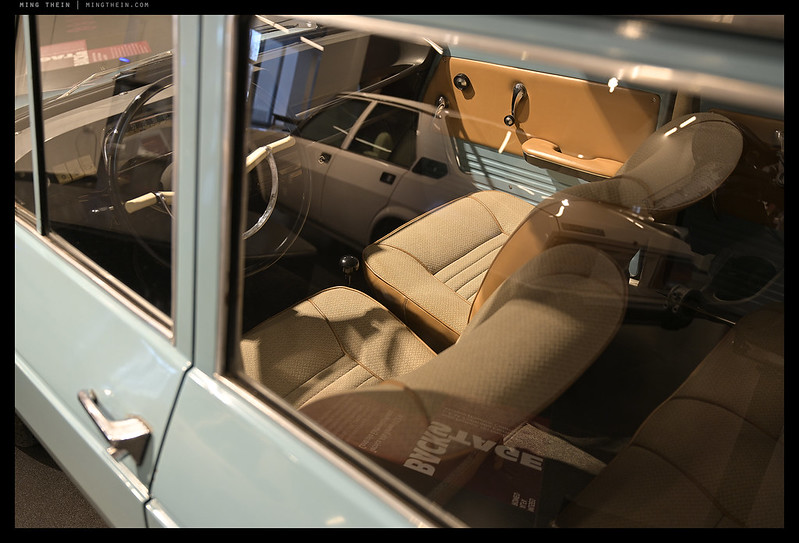
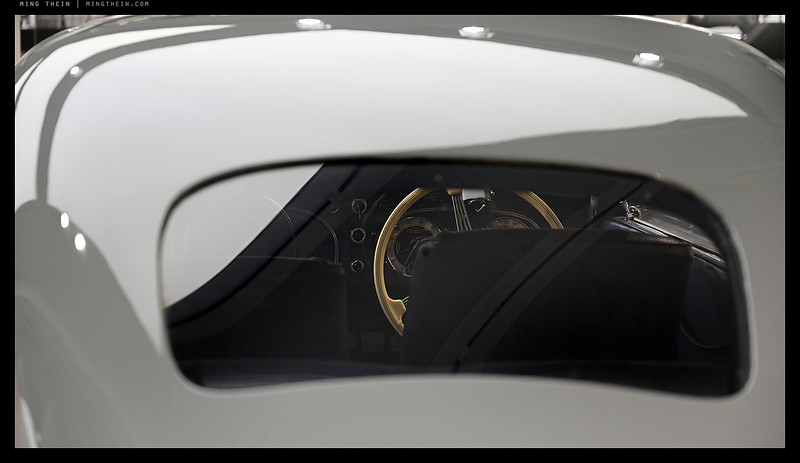





Doesn’t surprise me that keen photographers will prefer cars that are a bit more than appliances on wheels. The visual language of line, lighting, form and proportions is equally understood in both camps. And the tactile interaction with a well made mechanical device is pleasurable, whether you have a good camera or a manual gear shift in your hand. I am reminded of this when I pick up a Contax RTS, a solid lump of a camera with tactile qualities missing from modern picture taking devices. It was penned by the House of Porsche in one of their first design forays outside the automotive world.
Porsche Design has actually done quite a few interesting cameras – the early ‘vertical’ Fuji-Leica colabs were their work, too, and one of the more successful (and rare) attempts at breaking the ‘traditional’ camera mould to fit the operation of digital devices. Nothing much else of late, sadly. The X1D’s successor would have been similarly interesting, but who knows what DJI did with my design in the end.
I too don’t see latter Porsche generations becoming sort after classics. Initially unloved by the enthusiasts 996 values started to climb a few years ago. I think the reason was pure value for money in terms of the performance coupled with scarcity in the case of the turbos and GT3s. The same thing happened with 944’s. My 1986 944 turbo was until about 8 years ago valued less than a 1992 944 S2. But now presumably because of its scarcity and performance advantage (and possibly its more pronounced 80’s styling) its worth nearly double the value of a S2. The 968 Clubsport was for the first 15 years always worth less than a full spec 968. The CS was a marketing ploy by Porsche UK to shift slow selling 968’s, they stripped all kinds of features out and fitted bigger brakes and tyres and dropped the selling price substantially. The CS is worth about 50% more than the full sec 968 nowadays. Ditto the inferior driving but more classicality styled 964 compared to the 993, value reversal occurred and now the 964 is worth more.
It seems the appreciating future classic should be classicly/strongly period styled, but always a rarer more performance focussed version of the model and as original as possible. Four cylinder models I believe are here to stay, thanks to emissions legislation, and agree they will not be the sort after future variants.
Porsche sports cars (in fact almost all marques) in each generation are getting built in higher volumes I believe as a result of being bigger, softer handling, less tactile and more electronic. Driver focussed models will have a small niche, But I feel knowledgable enthusiasts may not seek out these latter niche models for fear of long term maintainability due to overall complexity and ultimately lack of skills and parts to keep them running. I am sadly going have to sell my 1998 Mercedes SL in the next few years because as my everyday car I cannot keep it running as essential parts support from Mercedes has more “holes” in the inventory each year. Porsche and BMW are better at long term model support.
Your Cayman sounds like it has what classic dealers call “period upgrades”. The classic market does look down on such modifications like they would an Android stereo unit in say a 964. Its the most driver focussed version of the last generation of analogue Porsches. I have got no doubt its value will only go upwards from this point onwards. You are perhaps in a place with your Cayman now where I was 20 years ago with my 944, embracing its design as a classic rather than an outdated generation, appreciating its tactile qualities for their rawness and fidelity, letting future generations which surpass its outright dynamic capabilities happily pass you by reassured by the knowledge that your car “feels” better and realising you will never get a chance to afford and therefore own a car that meets your long term aspirations as well as the one you already have. The advice I was given 20 years ago regarding my 944 was “never sell it” and that is my advice to you. Each year it becomes more distinctive than the soulless white goods (a term in the UK that refers to refrigerators, washing machines, toasters etc) cars that surround it in terms of design and feel. And that makes it feel more special to drive each year.
Sounds about right. Big brands have to keep getting bigger to satisfy the corporate demands/ expectations…smaller brands will spring up to replace them, but remain even more niche (and 100% inaccessible to a lot of us – even if price were not a consideration, there’s no way to import/certify a lot of these cars). I will almost certainly never get a chance to drive a Janarelly or Caterham because of regulations, much less spec and own one.
I have no intention to sell the Cayman, which is precisely why I’m not bothered with the “period upgrades”. I‘m not quite sure a 997 GT3RS intake system or brakes and suspension from the 987 Interseries Cup Car are analogous to an Android head unit though 😉
“I‘m not quite sure a 997 GT3RS intake system or brakes and suspension from the 987 Interseries Cup Car are analogous to an Android head unit though 😉” – this made me smile, I can assure you these are period upgrades in my book, but so many younger drivers/readers would I am sure pity you for the money you wasted on said mods when you could have had a new head-unit with more pixels and colours on its screen than their first smartphone for a fraction of the cost. Its not too late to redeem your car…. 🙂 🙂
Whatever makes us happy, I guess – I intend to enjoy driving it the way I want to drive it, not preserving it for the next owner… 😉
Well said. One of the pleasures for many is the tailoring of their car to their exact preference and giving them a freedom of expression on its design. I think that the support industries for this are diverse and generally producing good kit. I’m sure this situation will continue even when the majority are being moved around in driverless cars that are owned by fleet operators.
In the UK road surfaces are in the worst state of repair in living memory (due to cuts in spending). I’ve driven on roads in many countries around the world, and baring two African countries, I would put the UK’s at the bottom of the pile. Some of the more knowledgable road testers are now advocating softer suspension as being the best solution for fast road use in the UK. Interestingly one who has in his career tested all of the mid engined V8 Ferraris reckoned the relative suspension softness, body size and power output of the 1995 F355 made it the best of all for 2019 UK road conditions. That made me sit-up, the 25 year old model is better for current conditions than the current model, accepting the UK may now be an outlier. Many years ago a track day in my 944 showed how much grip, albeit with less body control than I would have liked, the standard suspension had. I decided not to go down the upgrade route as a result. I didn’t know at the time, but I am thankful I made that decision, our roads now are so poor. It sounds like you’re lucky, your roads are well maintained?
Having driven on both – Malaysian roads are worse, I think. I have fully adjustable suspension but am running a very much road-oriented setup with soft compression and harder rebound, middle damping and spring rates – I have better body control than the stock setup (and much less roll/pitch) but also a lot more compliance and comfort. It feels precise, planted and firm but not pogo-y – not easy to describe. But it would not be my preferred track setup – much too soft.
As a former Alfa owner I can heartily agree with your observations about the classic Italian designs.
Sadly, as a student I could afford only a used 1969 GTV but it stoked my desire for earlier models and some of their exotics like the TZ.
At that time (1980’s) the cars were startlingly affordable. But my income was wanting and thus I may have been spared entry into an expensive addiction.
That Giulietta GTA for me…
I loved the images and details but also would have appreciated views of the complete cars, both for the beauty of the whole and to help with orientation. I realize getting uncluttered whole views can be difficult when cars are packed in a museum. I always look forward to seeing your work and studying how you view things.
Thanks. One of the reasons I didn’t is as you pointed out – there was simply no way to make an interesting image of the whole act without a bunch of clutter in the background. I had to make do with imagining what could might be possible in a studio…
As I love both cars/racing and photography, these photos were especially enjoyable.
I’ve often said to friends, “Back in the day, each brand had an individual look. You could tell what brand a car was from 50 metres away”.
That’s gone, as now, every brand has to achieve the same goal, aerodynamics, so they all end up with basically the same shape.
And as Linden says, they have no soul.
My wife and I have 3 cars, a 1975, a 1976 and a 1996. I doubt I’ll ever own a new car again.
Ferrari definitely can design a car, and they sure can make beautiful red paint!
It doesn’t help that a lot of new stuff is designed to be essentially disposable – there are a lot of unrepairable or dealer-only elements that are going to keep them prohibitively expensive to keep running in the long term. And let’s not even start on batteries…
That said, the reliability stakes may be partially offset by modern tolerances/ QC, so who knows.
Car design is more about safety regulations and packaging than aerodynamics. Ferrari cars were designed by Pininfarina for many years.
I can’t imagine BMW’s new enormous gaping nostrils being good for either, though!
Nice series.
This week I have been glued to any video on Youtube reviewing the new Morgan Plus Four and Plus Six. An unfortunate launch year, but the reviews are trickling out for the former.
As we move to more automation in the driving *experience* we lose the analogue feeling of connection to driving – pulling the steering wheel at low speeds, pushing the gear stick through the gate, pushing a pedal and feeling through your foot the brake engage the disc. Part of the appeal of these old cars – aside from their pure aesthetic beauty as objects, is seeing what you know to be an analogue experience in driving – e.g. the steering wheels were large for a reason.
In a manual-wind mechanical wristwatch the larger crown is a nod, a reminder to the owner that it wants to be wound, and in the increasingly digital world, the crystal display back invites us to peer into that miniature mechanical world and marvel at the now alien nature of it.
The Carfection videos of both of those (and their stuff in general) are very much worth watching.
Fully agreed. Modern cars are like computers…push a button and something happens, but it might or might not respond the way you expect it to – and it isn’t really clear what’s going on in between most of the time. Worse still, sometimes the computers get too smart and throw an unexpected anomaly; you just hope it isn’t in the middle of a corner.
“As we move to more automation in the driving *experience* we lose the analogue feeling of connection to driving ”
100% spot on. Today’s cars are a mess with regards to anyone who wants a real driving experience. The drivers are so isolated from the cars that fake noises are pumped in through the stereo systems! Ridiculous.
The manual gear box has largely disappeared. Automatic transmissions have very much improved, but using an auto decreases any skill level in operating the engine. Traction control, ABS, and all kind of other technologies have reduced the need to have a skilled driver. The car does so much for the driver these days. Just like digital cameras do for the photographer. As a result, I have lost interest in both, completely. When I shoot, which is very rare these days, I pull out my Nikon FM2n and try hone my skills with a camera that does nothing for me except meter.
Driving wise, I bought a Lotus Elise last year and have put 10,000 miles on it up to this day. This is a car that does almost nothing for me. I am responsible almost everything. It is a visceral experience, miles away from what any BMW or Audi can give you. I sit 5 inches off the ground, staring into the wheels of SUVs and trucks next to me. The 6 speed manual transmission allows me to rev up to 8,500 rpms, which is an absolute joy. The hellacious sound of the engine going full bore is sublime. The steering rack is 100% manual and I can feel every little feature of the road, the opposite of BWM’s woeful power steering, which is routinely criticized throughout the entire motor press. This Lotus Elise does everything I want it to do. I will own this car forever until I prepare to leave the planet.
A side, unintended bonus is near total exclusivity. Despite costing far less than a BMW M2 (my Elise w/8,000 miles on the clock cost $30k while a BMW M2 pre-owned costs $49k), almost no one has ever seen a Lotus Elise. There are only 3,000 of these in the entire USA. Quite rate. Every fuel stop is an event for these people as I am almost constantly asked what kind of car I’m getting out of. The Elise has a very compelling shape that really touches people. I didnt buy it for that reason, but now that I have experienced its affect on people, I find it a new and interesting way to talk with people.
An Elise ruins you for other cars. The level of input and connection to the road is off scale. Moving to a more mainstream car is a profoundly disappointing experience.
I have a soft spot for the Elise (thought an Exige would probably be my choice) but it doesn’t seem to have one for my back – so I got the halfway house 987 Cayman R. The mechanical bits are still directly connected and largely unfiltered, but there’s an element of comfort missing from the Elise/Exige. No regrets other than it making my m2 feel like driving a mattress…
Yes, there simply is no comfort at all in an Elise and as Exige as well. Getting in and out of an Elise is a difficult exercise in its own right. They deliver bone crushing rides on anything but the smoothest roads. Sadly, where I live the roads are awful, but I deal with it because otherwise I cannot have my dream vehicle.
Colin Chapman was a genius automotive designer. While he was not around for the Lotus Elise, his spirit lived on and guided the design team. The Elise is nothing more than simple Toyota parts, augmented by Yamaha’s tuning to get that engine up to 8,500 rpms. Nothing exotic about the Elise at all, other than the design of the fiber glass body. Yet the results on the road are worlds apart, even galaxies apart from a normal car. My sympathies for you and your back injury. There’s no question that an Elise or Exige is suitable for someone in your position. It would ruin you forever.
But it doesn’t stop me from continually looking! As you say, there’s something special there…
Of course, in the post above, I meant to say “unsuitable” for someone with a back injury.
Interesting. I’ve never driven a Lotus, but I admire their purity of purpose and design. Perhaps I would enjoy the rawness of the Elise – that visceral and direct driving experience. Or perhaps the Evora is more me – did either of you consider that one? Perhaps when the time comes I will test drive the three Lotus ranges and the two new Morgan models. Very different marques I know.
I’ve always felt claustrophobic in an Evora – not sure why, when the Elise is smaller and doesn’t bring on the same sensations. That and most of the Evoras here have that horrible automatic gearbox…
Perhaps a recent Caterham 7. Track days only. No claustrophobia there.
Another one of the cars I’ve got a lot of curiosity about…alas, none in Malaysia.
Interesting you bring this up. I saw a Lotus 7 (the car the Caterham is based on) this weekend for the first time ever. It was parked on the side of the road. That is one tiny car! But I love mid engine cars so the front engine 7 is not for me. One day I’ll pair my Elise with either an Elan (60’s-70’s model) or an Espirit. In a perfect world I’d pair it with an Elite, but those are HUGE dollars. Gorgeous cars…I hope one day to see one on the road.
I never considered an Evora due to its price point being much higher than the Elise. Also, it is HUGE compared to the tiny Elise. I love small cars. I’m sure the Evora is a great car, but it strays too far from the Lotus concept of being light. The Evora is probably the heaviest Lotus every built up to that point.
The Lotus dealer I go to for service also sells Morgans. Very interesting and unique cars, especially the 3 wheeler. Not really my thing but I do like to see them on the road.
I have driven an Elise, and while I appreciate its purity it lacks comfort to too great an extent. I stuck with my 1986 944 turbo. But I admire the design principles of the Elise.
Here’s a thought for how cars of the future should be designed so as to cause minimum environmental impact:
a) Light weight to reduce the energy consumption of the vehicle and reduce consumption rate of things like brake hardware, tyres and suspension components
b) Simple design to reduce the manufacturing footprint of none essential systems (e.g. tweeters that motor up and down out of the dash as and when the stereo is operated – Jaguar – guilty)
c) Simple so that they are repairable over a very long time period, avoiding landfill scenario of unsupported tech. Anyone fancy their chances of keeping a modern up-spec car going when its 50 years old?
d) Lightweight to reduce wear and tear of roads, which then have to repaired less often
With the exception of Lotus and similar, all mainstream brands are designing cars that are the complete opposite of above criteria. Then they have the nerve to tell us they care about the environment. Its no good letting the marketability of products lead their design, most people won’t do the right thing for the environment if it means giving up their overweight, overloaded status symbols.
And what about designing a bodyshell and control architecture that is required by law to be suitable 30 years use, but with a modular propulsion system that can be updated as and when genuine advancements have been made in said system? Making “things” causes harm to the environment. No need to discard most of the car just because a better propulsion system has been devised.
In a weird way…keeping older cars running longer is probably better for the environment. I’m not sure the total ownership cost and impact of say buying a top of the line sports car in the 90s and keeping it running until today is higher than a new Camry every six or seven years…and there is zero incentive to keep a Prius running for that long. Don’t get me started on why I think that thing is a failure as a car…
Studies that show keeping older cars on the road is better environmentally than relatively frequent replacement with new cars are hard to find, who would sponsor such a study (obviously not car makers and not governments who want sales taxes)?
But I’ve found figures that show the embodied energy cost in a car (what it takes to build the car) is 76,000kWhr. If you car averages 30 miles/gallon of petrol then that equates to 55,000 driven miles. Keeping a car running until its 30 years old as opposed to 15 years old saves the amount of energy it takes to build one car. If over 30 years 220,000 miles (to keep the arithmetic simple) are travelled then:
Single car energy consumption = embodied + petrol = 76,000 + (4 x 76,000) = 380,000kWhr
Two cars energy consumption (assume 10% fuel economy benefit through newer design) = (2 x 76,000) + (0.9 x 4 x 76,000) = 430,000kWhr.
Changing tack slightly, in another study that compared CO2 release of a diesel Mercedes E Class to a Tesla, assuming same mileage driven over 8 years, Tesla electrically recharged in Germany with high fossil fuel electricity generation network, and taking account of embodied energy the E class produced 30% less CO2 than the Tesla. And that is with the Tesla on it first set of batteries. At year 9 the Tesla needs more batteries, which would thereafter further widen the lead of the E class.
And finally, running costs. From my own records allowing for repairs,maintenance and deprecation, but excluding fuel and annual road tax of the car:
Mercedes SL320 1998, ran from 2011 to 2019 = 23 pence/mile and £1,700 / year
Porsche 944 turbo 1986, ran from 1997 to 2019 = 28 pence/mile and £1,200 / year
BMW 530i 1988, ran from 2000 to 2011 = 17 pence/mile and £900 / year
Volvo 360GLT 1982, ran from 1993 to 2000 = 7 pence/ mile and £350 / year
Never owned a new car, but I’d be interested to hear what equivalent running costs would be from anyone who has.
Our country has a strange tax structure, which skews purchase/depreciation numbers. But the 2018 BMW M2 I’ve now had for two years has been zero in maintenance (included for the first five years) and a whopping £20,000 depreciation a year – as I said, strange tax structure. Conversely, my 2012 Cayman R has cost about £700 in necessary maintenance (excluding upgrades) and has appreciated, meaning even after significant upgrades I’m still better off. I suspect a lot of cars will eventually reach an inflection point where they don’t depreciate anymore, and even start to reverse; but this is contingent of course on maintenance and other finicky social status things like desirability…
The trick to lower cost motoring and use of a car with character I believe, for both of us, is to spot the next car which has reached its inflection point, then purchase it at that time. I bought both the Porsche and Mercedes a few years before they reached inflection. The Mercedes has increased maybe 20% from my purchase price, but the Porsche has more than doubled in value. Both have been very well maintained throughout their lives and represent close to best of type, but certainly not concours, they are used regularly 🙂
Your Cayman, being both the R and having a flat 6 falls into the future classic category. Not all, in my opinion most, Porsche models will appreciate. Classics are owned by enthusiasts and so in choosing a future classic you have to ask, what would an enthusiast want? In my opinion its rarity, originality (keep the original parts your upgraded on your Cayman), manual gearboxes and stripped out performance orientated variants of a car. But I might be wrong, I’ll tell you in 15 years time when I sell the replacement for my Mercedes 🙂
Given taxation in your country does this mean your future cars will be good used examples?
I think the 996, 986, 987 and 997 generation Porsches are at about that inflection point now; remains to be seen where the 991 goes seeing as future generations are likely to be in the “too electronic” camp. I don’t see the 981 doing as well (except maybe the GT4; it too became too electronic and detached with rather numb steering) – and don’t get started on the 718. That said, if everything goes back to six cylinders – maybe the fours will retain some historical value.
My Cayman looks bone stock from the outside except for the brakes. Everything else is hidden…I’ve kept it as stock as possible but with the kind of upgrades that pretty much every long term owner tends to do for both longevity and performance. But – mechanical, check; manual, check; flat 6, check; passive hydraulics on damping and steering, check; stripped out performance variant, check; rarity…well, 150 manual RHD examples worldwide – check. And it’s an incredible car to drive…I never thought I’d own something daily-usable and comfortable that made the M2 feel like a mattress, but there you go.
“Given taxation in your country does this mean your future cars will be good used examples?”
Not just because of taxation, but because the new stuff just isn’t interesting and you’re going to take a colossal depreciation hit – ever increasing as the lifespan of these things gets shorter and shorter, too…